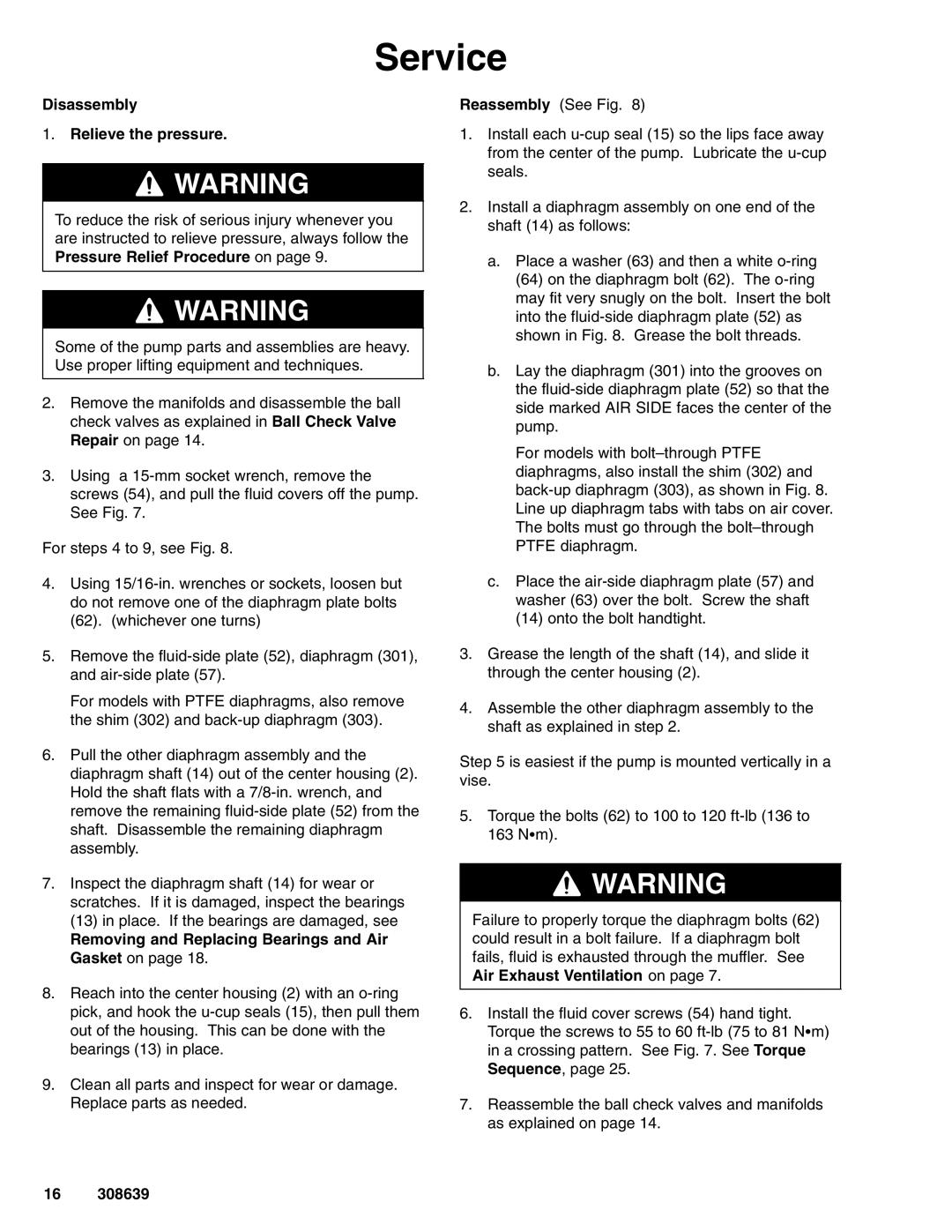
Service
Disassembly
1.Relieve the pressure.
![]() WARNING
WARNING
To reduce the risk of serious injury whenever you are instructed to relieve pressure, always follow the Pressure Relief Procedure on page 9.
![]() WARNING
WARNING
Some of the pump parts and assemblies are heavy. Use proper lifting equipment and techniques.
2.Remove the manifolds and disassemble the ball check valves as explained in Ball Check Valve Repair on page 14.
3.Using a
For steps 4 to 9, see Fig. 8.
4.Using
(62).(whichever one turns)
5.Remove the
For models with PTFE diaphragms, also remove the shim (302) and
6.Pull the other diaphragm assembly and the diaphragm shaft (14) out of the center housing (2). Hold the shaft flats with a
7.Inspect the diaphragm shaft (14) for wear or scratches. If it is damaged, inspect the bearings
(13)in place. If the bearings are damaged, see
Removing and Replacing Bearings and Air Gasket on page 18.
8.Reach into the center housing (2) with an
9.Clean all parts and inspect for wear or damage. Replace parts as needed.
Reassembly (See Fig. 8)
1.Install each
2.Install a diaphragm assembly on one end of the shaft (14) as follows:
a.Place a washer (63) and then a white
(64)on the diaphragm bolt (62). The
b.Lay the diaphragm (301) into the grooves on the
For models with
c.Place the
(14)onto the bolt handtight.
3.Grease the length of the shaft (14), and slide it through the center housing (2).
4.Assemble the other diaphragm assembly to the shaft as explained in step 2.
Step 5 is easiest if the pump is mounted vertically in a vise.
5.Torque the bolts (62) to 100 to 120
![]() WARNING
WARNING
Failure to properly torque the diaphragm bolts (62) could result in a bolt failure. If a diaphragm bolt fails, fluid is exhausted through the muffler. See Air Exhaust Ventilation on page 7.
6.Install the fluid cover screws (54) hand tight. Torque the screws to 55 to 60
7.Reassemble the ball check valves and manifolds as explained on page 14.
16 308639
